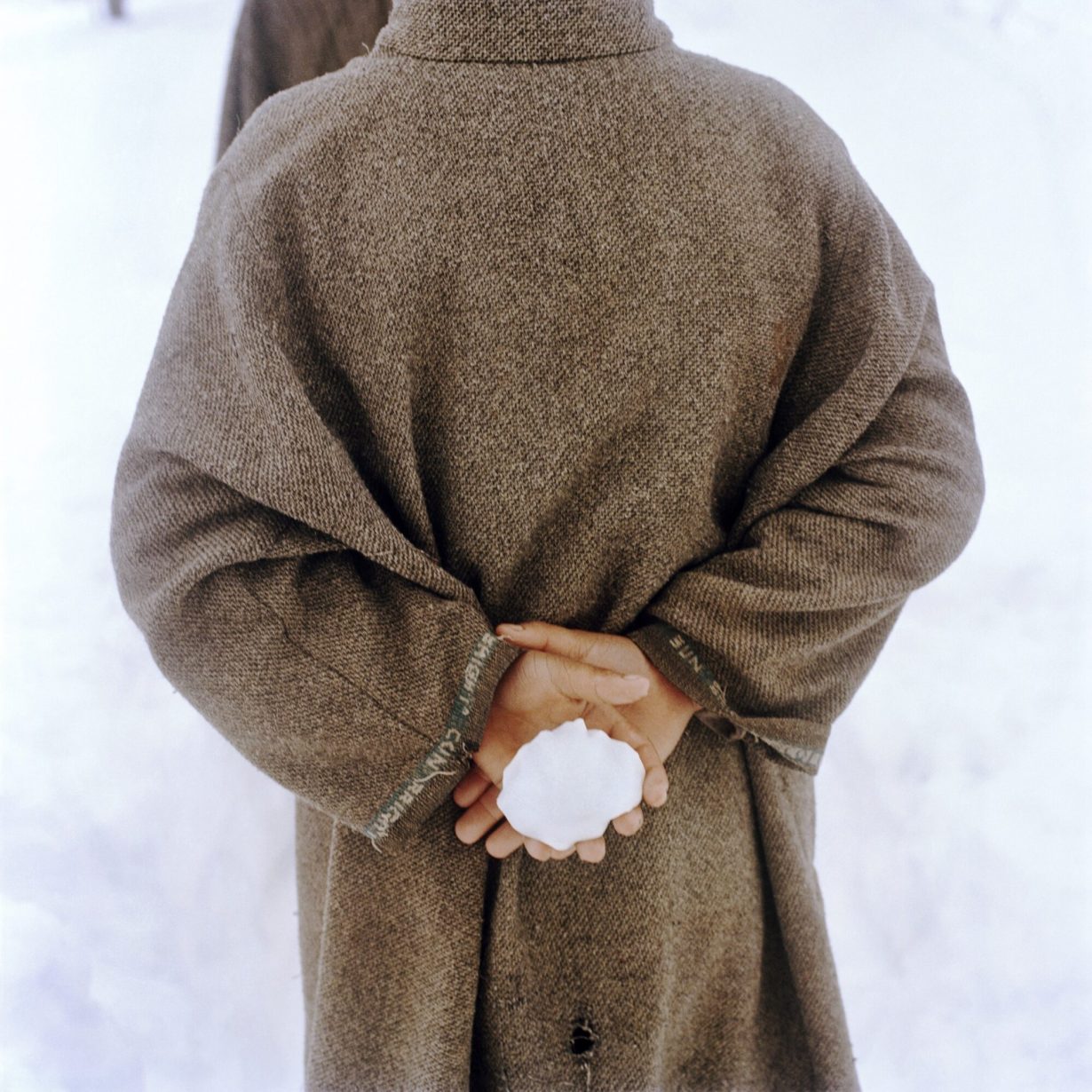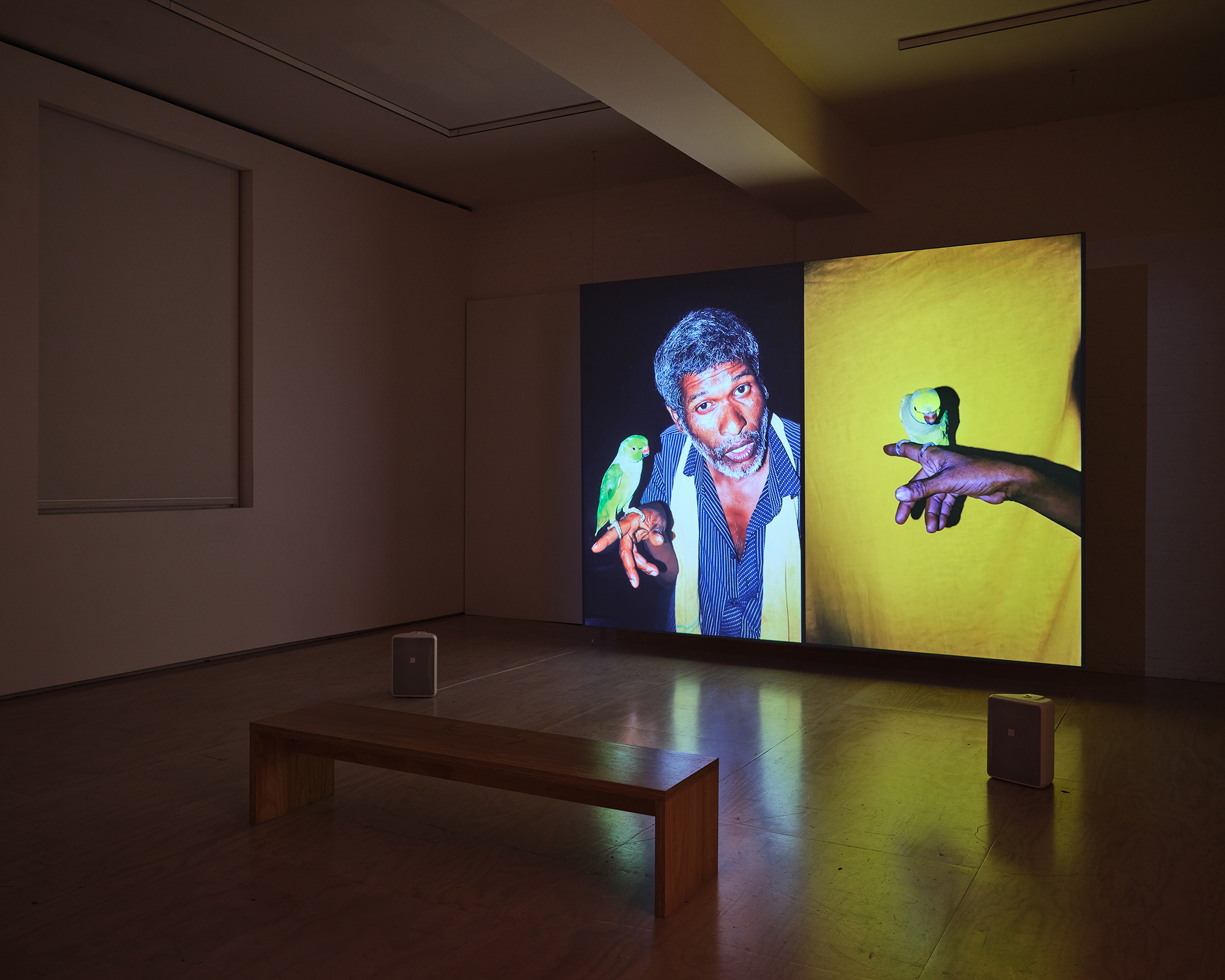At MoMA PS1, Hura explores the mother – or at least, his own – as a metaphor for social, political and economic safeguards
Someone with rail-thin calves and bony ankles is wearing flip-flops in the snow. This seemingly undernourished photographic subject in unseasonable footwear, seen only from their knees down, stands out among the two dozen or so inkjet prints from Sohrab Hura’s Snow series (2015–) displayed in the main room of this survey of the artist’s two-decade career. According to the exhibition notes, Snow was shot in Kashmir, a territory in the northern part of the Indian subcontinent that has been contested by India, China and Pakistan since the mid-twentieth century; in 2019 the Indian government issued a months-long communications blackout there that upended local lives and businesses. In a show titled Mother, a word that calls to mind both centralised authority and a point of origin – possibly India, the New Delhi-based artist’s ‘motherland’, or Hura’s literal mother, who appears in the exhibition – these bare legs in the biting cold evoke a motherless condition, an estrangement from proper care, whether from family, society or the state.
Motherlessness as a political metaphor is invoked in Hura’s depictions of material poverty, in the artist’s earlier photojournalistic works. In the black-and-white video Pati (2010/2020), which plays on a monitor opposite Snow, rural children are shown ploughing fields and carrying bricks. The photographic series Land of a Thousand Struggles (2005–06), installed in the same gallery, documents the plight of subsistence farmers, migrant workers and victims of police violence, which the artist witnessed while travelling across northern and central India with a band of activists as part of the Right to Food movement in his early twenties. However, just as Hura eventually expanded his practice from straightforward depictions of neglect and alienation, Mother moves from photojournalism in its main room into more self-reflexive and expressive forms of art in the four smaller adjoining galleries.

The recent video The Lost Head and the Bird (2019) is a convulsing beast tucked away in one of these smaller spaces. By sequencing and editing a series of photographs taken in India (originally published as the photobook The Coast, 2019), Hura weaves a visual narrative around an image of a naked woman, seen from behind, whose head is lowered in such a way that she appears decapitated. We have no way of knowing if the photograph was candid or staged, and Hura exacerbates the ambiguity by giving us neither context nor time to react before it is replaced by another provocative and absurd image. For ten minutes we are bombarded with glimpses of street fights, bloodied bodies, a ‘severed’ head on metal platter in what appears to be a garish funhouse and so on – flashing by onscreen at an increasingly aggressive pace. Like much of the online content that goes viral, The Lost Head… is designed to frighten and frustrate with its brash depictions of violence and alterity. Here, Hura critiques the way in which the image itself has been rendered effectively motherless in our age of social media. Cleaved from its source and globally disseminated, it has grown unruly and ungovernable, no longer the child of a creator but a ward of the commons – a site of speculation and fodder for fiction.
One finds a mother – Hura’s – amid the show’s barrage of imagery. In the video Bittersweet (2019), another, albeit less frenetic, montage of photographs and footage, a middle-aged woman is shown in various states of repose around her house, often wearing a deep frown and weary eyes. We learn from the exhibition materials that she lives with acute paranoid schizophrenia and, from a four-page letter displayed on a wall, that for 13 years she raised and doted on a dog named Elsa. In the video, however, Hura’s mother seems unlikely to divulge any of these biographical details: her expression, when she looks at the camera, is frequently sullen and closed off (she more often emotes towards animals such as Elsa in the snapshots Hura has included). When she appears in Hura’s works on paper, her countenance is distorted by his expressive markings and unnatural palette; in a gouache painting titled Mother (2023), her skin is grey, her lips black and her eyebrows pencil-thin, as if she were wearing stage makeup or an exaggerated mask. Here and across Hura’s exhibition, the mother as a metaphor for social, political and economic safeguards remains inaccessible; given this, it is up to her ‘children’, the work implies, to bear witness to one another.
Mother at MoMA PS1, New York, through 17 February
From the March 2025 issue of ArtReview – get your copy.
